“It is forbidden to kill; therefore all murderers are punished unless they kill in large numbers and to the sound of trumpets.” ― Voltaire
Throughout the centuries, there's been a lot of human bloodshed. For better or worse, assassinations, the killing of a person for political or social reasons, have had a significant impact on our history.
Here are 49 facts about assassinations.
49. Kind of a Lousy Disguise...
In 1771, Gustav III of Sweden reinstated an absolute monarchy and instated himself as a totalitarian leader. In 1792, an angry military officer and two co-conspirators planned to kill him at a masquerade ball. Gustav got word of the assassination attempt, but thought that he was safe since he’d be in disguise. The king was easily spotted due to the star of the Royal Order of Seraphim on his cape and was killed at the ball. The assassins got away, and assumed that their masks would hide their identities. They were caught the next morning, flogged, and decapitated.

Gustav III of Sweden (left) and his brothers.
48. Careful who you Criticize!
Theo Van Gogh was a Dutch director and producer of film and television as well as an actor and screenwriter. In 2004, he worked with a Somali-born politician and writer to produce the short film Submission, which criticized the treatment of women in Islam.
The film was the subject of outrage by the Dutch Muslim community. Van Gogh was known for his outspoken opinions, and had been fired by almost every Dutch newspaper and magazine at one time for offending their readers. On Nov 2, 2004, as he cycled to work, Mohammed Bouyeri, a Dutch-Moroccan Muslim, shot him eight times with a handgun.

47. Political Aspirations Quashed!
On September 19, 1881, after spending just 200 days in office, President James Garfield was killed, making him America’s second assassinated president. His assassin was an attorney with political ambitions named Charles Guiteau. When his requests for appointment were denied, he vowed revenge. On the morning of July 2, 1881, Garfield was walking through a train station on his way to a short vacation when Guiteau came up behind the president and shot him in the back. 80 days later, Garfield succumbed to his wounds. Gutieau was convicted of murder and hanged on June 30, 1882.

Artisitic depiction of Charles Guiteau's trial.
46. First Prime Minister of Pakistan
Liaquat Ali Khan was acclaimed as “qaid-i-millet” (leader of the country) and he became Pakistan’s first Prime Minister. His role in the creation of the State of Pakistan won him the respect and admiration of the Muslim Community. On October 16, 1951, Kahn was shot and killed at a meeting of the Muslim City League at Company Gardens in Rawalpindi. The assassin was reportedly angry at Khan’s refusal to go to war with India, but new evidence suggests that the assassination was ordered by the CIA.
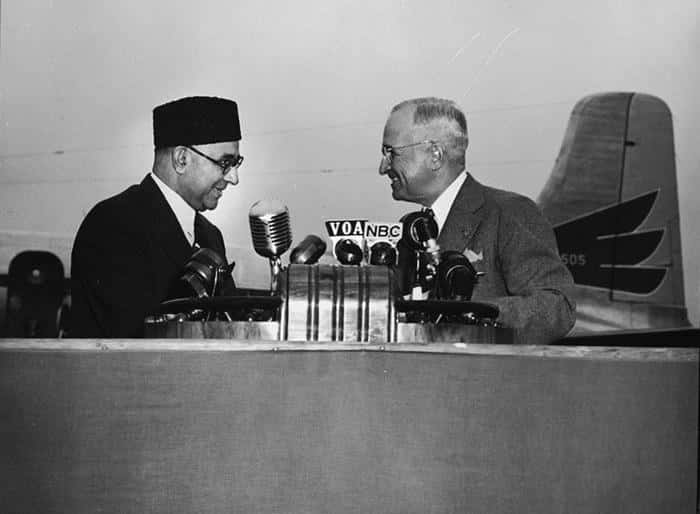
Liaquat Ali Khan (left).
45. The Bangabandhu
Sheikh Mujibur Rahman was the founder of the modern state of Bangladesh, and he led the nation to independence from Pakistan. He was the first and fourth President, and second Prime Minister of the country. He wanted to create political and economic stability, and to give the people a sense of identity. His fame and popularity with among the masses earned him fierce dislike from the military, and in 1975, Rahman and members of his family were assassinated in his residence in a military coup d’état.

Sheikh Mujibur Rahman.
44. Hated by Catholics and Protestants
King Henry IV of France was known for signing the Edicts of Nantes, which granted religious freedom to Protestants. He was also notorious for his sexual exploits that earned him the nickname “the gay old spark.” He was considered a usurper by the Catholics and a traitor by Protestants, and he endured multiple assassination attempts. On May 14, 1610, he was stabbed to death by a Catholic fanatic. His body was buried in the Basilica of Saint Denis in Paris, but in a ghastly twist, the head was lost when the Basilica was ransacked in 1793.
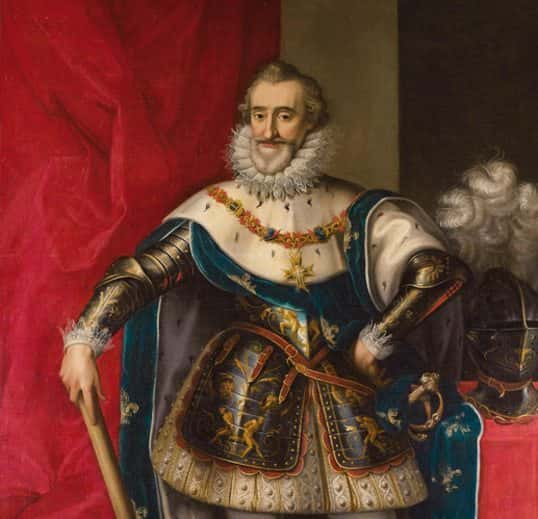
43. The Catalyst for the Rwandan Genocide
In 1994, the President of Rwanda Juvenal Habyarimana was killed when his private jet was shot down by two missiles. The plane crashed on the presidential grounds, and everybody on board was killed. Those responsible were never found, but most theories point to either the rebel Rwandan Patriotic Front, or Hutu extremists. His assassination set in motion the Rwandan Genocide, one of the bloodiest events in the late 20th century.

Sources: 1, 2, 3, 4, 5, 6, 7, 8, 9, 10, 11
42. Queen Min: First Emperor of Korea
On October 8, 1895, Empress Myeongseong of Korea, known as Queen Min in her lifetime, was murdered by Japanese Assassins. A group of Japanese swordsmen dressed in robes stormed the palace and burst through into her chamber. Despite having numerous trap doors and escape routes in her chambers, Myeongseong was killed. Her corpse, along with a number of her courtiers was burnt, and her ashes dispersed.

41. Accident or Coup?
Park Chung-Hee, the President of South Korea, was assassinated on Friday October 26, 1979 during a dinner at a Korean Central Intelligence Agency’s headquarters in Seoul. His shooting by the chief of the service Kim Jea Kyu was supposedly “accidental”, but the incident was seen as an attempted coup by the KCIA. Park had already survived a previous assassination in 1974, when shots were fired at him as he gave a speech. The shots missed him, but one killed his wife.

Park Chung-Hee and President Kennedy

History's most fascinating stories and darkest secrets, delivered to your inbox daily.
40. It was the People’s Will!
Czar Alexander II of Russia did a great deal to liberalize and modernize Russia, including the abolishment of serfdom in 1861. When his authority was challenged, he became repressive and opposed movements for political reform. On March 13, 1881, revolutionaries from the group “The People’s Will” sent three bombers after his carriage. The first bomb blew up the horses, but only damaged the bulletproof carriage. The second bomb hit Alexander and injured as many as twenty others. The third bomb ended up being unnecessary, but it was later discovered that he was there as a “just in case.”
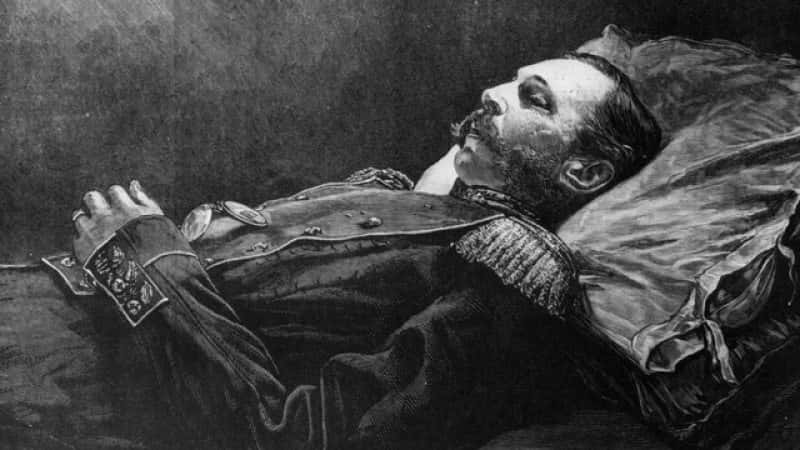
39. Murder by Monk
S.W.R.D. (Solomon West Ridgeway Dias) Bandaranaike was the founder of the Sri Lanka Freedom Party, and served as Prime Minister from 1956-1959. On September 24, 1959, a disgruntled Buddhist Monk named Talduwe Somarama visited S.W.R.D. at his residence and shot him. Because he was a member of the clergy, Somarama was never searched, and he was able to hide a revolver in his robes. Bandaranaike’s death was the first political assassination in the country’s history.

38. Death by Chair!
In the 2nd Century, Tiberius Gracchus made political waves in Rome when he attempted to legislate agrarian reforms. In dramatic fashion, he appeared in the senate with armed guards and a mourning costume, implying that defeat would mean his prosecution and death. What he didn’t expect was to be beaten to death on the spot. The senators picked up their chairs and beat him with them. Then they tossed him into the Tiber River and killed several hundred of his followers for good measure.

Tiberius Gracchus (left) and Gaius Gracchus (right).
37. The Marxist Who Challenged Stalin
Leon Trotsky was leader of the Left Opposition that challenged Joseph Stalin in the 20s. As a teenager, he embraced Marxism, and was the heir apparent of Lenin, but lost out to Stalin in the struggle of succession. After being permanently banished from the U.S.S.R. by Stalin, Trotsky was eventually granted asylum in Mexico. On Aug 20, 1940, an undercover Stalin agent Ramon Mercader met with Trotsky in his home to discuss an article he had written. As Trotsky began to review the article, Mercader pulled out an ice pick and stuck it into his skull. He died a day later from brain damage.

Leon Trotsky, the man who challenged Stalin.
36. Sorry, You’re on Your Own!
On May 9, 1978, former Italian Prime Minister Aldo Moro was found riddled with bullets in the back of a car in the center of historic Rome. On March 16 of that year, the terrorist group the Red Brigade kidnapped him after a bloody shootout by his home. The Italian government refused to negotiate with terrorists, and after numerous threats, they executed Moro. According to the wishes expressed by Moro during his abduction, no Italian politicians were invited to his funeral.
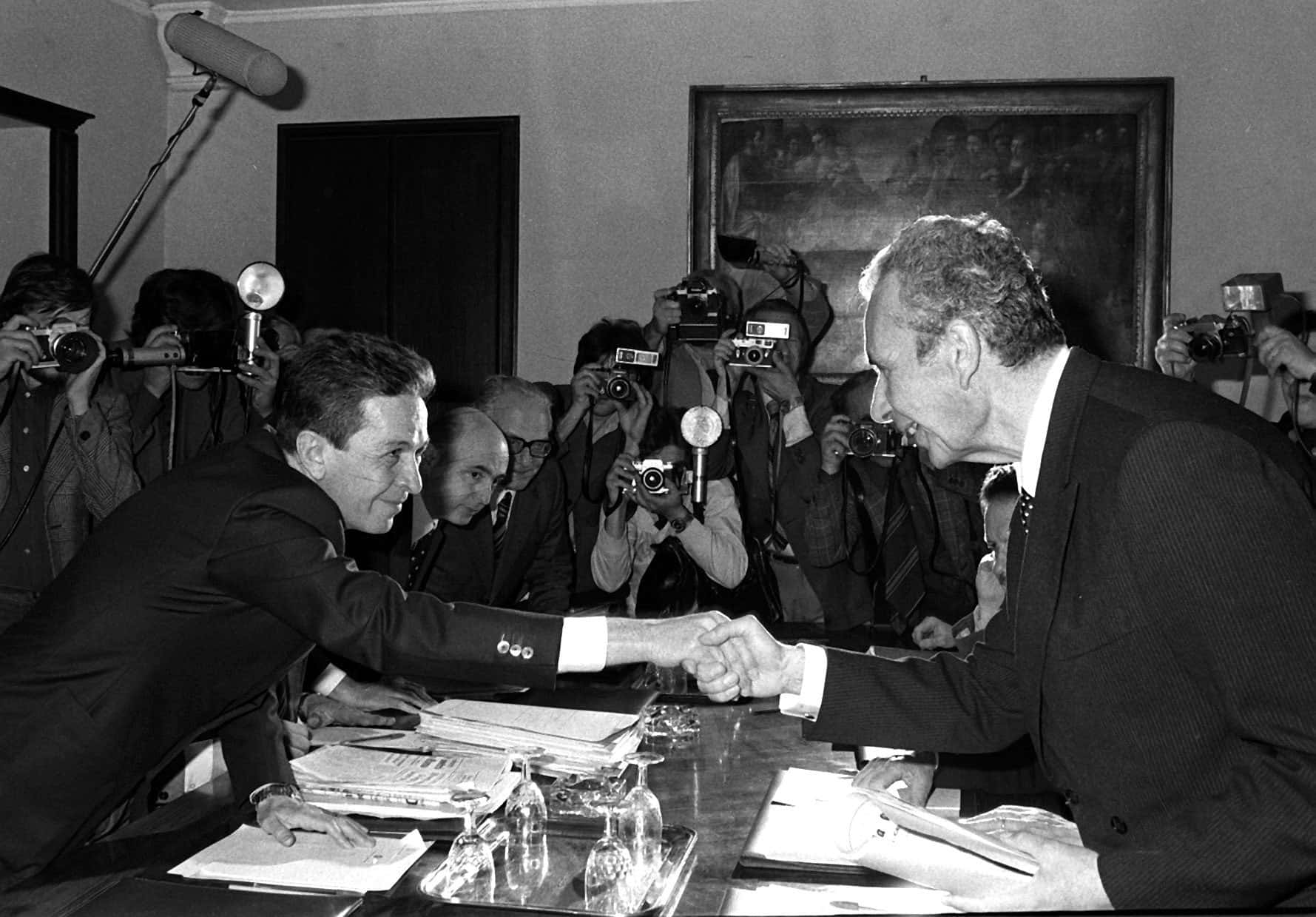
Italian Prime Minister Aldo Moro (right).
35. Vengeance Breeds Vengeance
Phoolan Devi was just 11 years old when she was forced to marry a man three times her age. He brutally beat her, and she escaped his abuse only to be imprisoned for a crime she didn’t commit when she returned home. She fell under the control of a gang of organized criminals, and soon took control of her own gang. On Feb 14, 1981, she ordered the execution of 22 upper-caste Hindu men as revenge for her rape and abuse. The event became known as the Behmai Massacre. On July 25, 2001, Devi was shot dead by three masked shooters outside of her home. The prime suspect was caught, and claimed to have shot her as vengeance for the men she shot down in the Behmai Massacre.

34. The Dominican Dictator
Rafael Trujillo took control of the Dominican Republic in 1931 through political maneuvering and torture. He officially held office until 1938 when he appointed a puppet successor. In 1942, he resumed his official position and continued to rule as a dictator until his assassination on May 30, 1961. On the night of his death, assassins waited for his car to pass them, and they open-fired. An injured Trujillo stumbled out of the car and was gunned down on the spot. Trujillo’s sadistic son and heir took over, and executed the conspirators, feeding some of them to the sharks.

Rafael Trujillo (center).
Sources: 1, 2, 3, 4, 5, 6, 7, 8, 9, 10, 11
33. A Forger of Peace
Under the leadership of Anwar el-Sadat, Egypt made peace with Israel, and he and the Israeli PM shared the Nobel Peace Prize in 1978. The peace agreement made him a target of Islamic extremists. He was also under threat for allowing the Shah of Iran to die in Egypt, and not returning him to Iran to stand trial for his crimes. Despite well-known threats on his life, el-Sadat remained in the public eye. On October 6, 1981, a group of assassins wearing army uniforms and led by Khaled el Islambouli (a Lieutenant in the Egyptian Army) stopped in front of the reviewing stand where el-Sadat stood, fired shots, and threw grenades into the crowd of Government officials. Ten people, as well as the president died in the attack.

President Anwar el-Sadat (right)
32. King of Saudi Arabia
Faisal bin Abdulaziz Al Saud was king of Saudi Arabia from 1964-1975. As King he implemented a policy of modernization and reform. He advocated the unity of Muslims under one Islamic State, was anti-Communism, and pro-Palestinian sovereignty. On March 20, 1975, he was shot point-blank by his half-nephew Prince Faisal at a majlis--an event where the leader opens his residence to citizens to enter and petition the king. The exact reason for the murder isn’t known, but one theory was that it was vengeance for the murder of his brother, who was killed by police during an attack on a television station. Fasil was convicted of Regicide, and beheaded in a public square.

31. Trusted the Wrong Person
Indira Gandhi served three consecutive terms as Prime Minister of India from 1966-1977 before being thrown out of office. She became Prime Minister again in 1980, and was assassinated by two of her own bodyguards on October 31, 1984. The daughter of India’s first Prime Minister Jawaharlal Nehru, she rose to power continuing his work of forging a nation from the many religious, cultural, and ethnic factions that existed under British Rule until 1949. In 1984, an attempt to flush out armed Sikh Extremists from a Sikh temple set off a series of death threats. She made the fatal mistake of trusting her long-time Sikh bodyguard, and he and another bodyguard shot her as she walked to her office from her adjoining bungalow.

30. Like Mother, Like Son
When his mother was assassinated in 1984, her son Rajiv Ghandi assumed power and became India’s sixth Prime Minister. His attempts to discourage separatist movements in the Pujab state and Kashmir region backfired, and that, plus a number of financial scandals forced him to resign in 1989. In 1991, while campaigning for the next round of parliamentary elections, he and 16 others were killed by a suicide bomber associated with the Tamil Tigers. The Tamil militants reportedly sought revenge against Gandhi because the Indian Troops he sent to Sri Lanka to enforce peace ended up fighting Tamil separatist guerillas.

Rajiv Ghandi (second from right)
29. It’s Not You, I Just Hate Rulers!
On September 14, 1901, William McKinley became the third American President to be assassinated. A few days earlier on September 6, a 28-year-old anarchist shot McKinley in the stomach during a public reception at the Pan American Exposition world’s fair in Buffalo. The killer, Leon Czolgosz, waited with a handgun wrapped in white handkerchief and hidden in his pocket. He walked up to the president without much notice, and when McKinley extended his hand, he shot him twice at point-blank range. He later said about the killing: “It was in my heart; there was no escape for me. all those people seemed bowing to the great ruler. I made up my mind to kill that ruler.”

28. Straight Out of a LeCarre Novel
Alexander Litvinenko was a former Russian FSB agent who specialized in tackling organized crime. He fled Moscow in 2000 and lived in exile in Britain where he was one of Putin’s most outspoken critics. From 2003 onwards, he was employed by MI6 as an expert on Russian organized crime. On November 1, 2006, Litvineko suddenly fell ill after taking tea with two former Russian agents. Three weeks later, he died, becoming the first known victim of lethal polonium-210-induced acute radiation syndrome. One year after his death, an inquiry set up by the British Government concluded that his murder was “'probably personally approved” by President Putin.

27. The Peasant Revolution
Emiliano Zapata was a Mexican farmer and leader of peasants and indigenous people during the Mexican Revolution. After the revolution began, he assembled an army of peasants under the slogan “Land and Liberty”. He was shot to death April 10, 1919 by government forces, His influence has remained long after his death, and his agrarian reform movement known as “Zapatismo” is still important to Mexicans today.
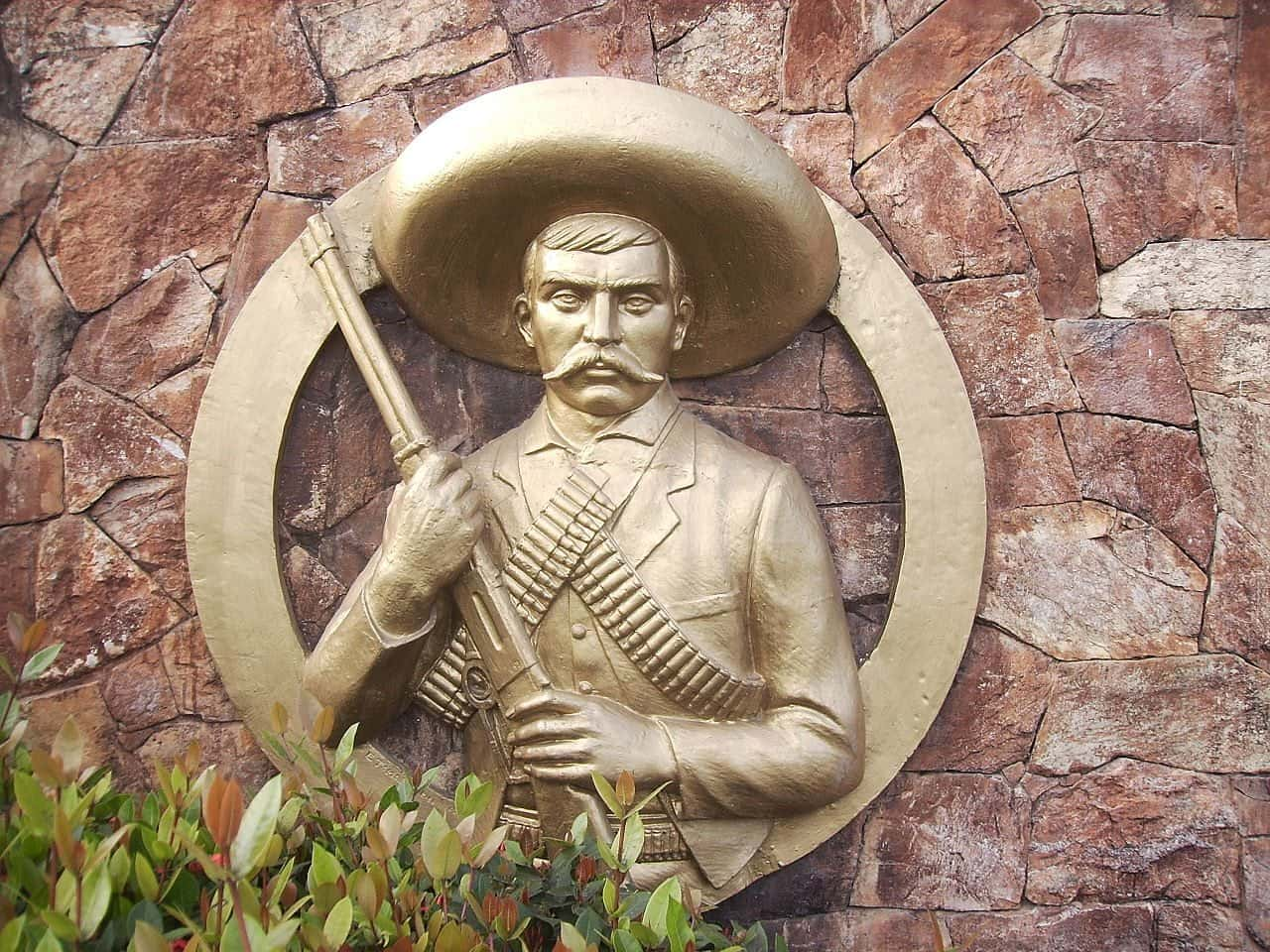
26. The Kingfish
Huey Long was a larger-than-life populist leader who boasted about buying legislators like “sacks of potatoes”, and “shuffled them like a deck of cards”. He gave himself the name Kingfish, saying that while he was a small fish in Washington, he was the Kingfish in Louisiana. In 1928 at age 34 Long became the youngest governor of Louisiana. Long had planned to take on Franklin Roosevelt in the next election, but was shot in the abdomen by the relative of a political enemy on September 8, 1935. The news of his death made headlines around the world, and an estimated 200,000 mourners flocked to Baton Rouge to pay their respects.

25. The Public Assassination that Nobody Saw
Kim Jong Nam, the half-brother of North Korean ruler Kim Jong Un, was assassinated at an airport in Feb. 2017. Two young Asian women approached Nam at the check-in kiosk at Kuala Lumpur International Airport. One grabbed him from behind, and the other pressed a cloth into his face. After a brief tussle, the women melted into the crowd. When the women were captured, they claimed to have been told that they were part of a prank TV show. Some theories suggest that the assassination was a plot by Un to consolidate power and eliminate a rivalry, but no proof has been found.

Sources: 1, 2, 3, 4, 5, 6, 7, 8, 9, 10, 11
24. Going to the Theatre Can Be Fatal!
While King of Macedonia, Philip II of Macedon skillfully used military and diplomatic tactics to expand his territory and influence over his neighboring Greek city-states. In July 336, Philip participated in a procession to enter the royal theatre, and was stabbed by his bodyguard Pausanias who disobeyed orders to leave and lingered behind. He stabbed Philip with Celtic dagger and killed him. To this day, nobody knows who orchestrated his murder. Scholars point to his former wife Olympias who wanted to ensure that her son Alexander would succeed Philip to the throne. (Which he did)

23. A Deadly Play
Abraham Lincoln was fatally shot while attending the play “Our American Cousin” on April 14, 1865. John Wilkes Booth snuck up behind him and waited for what he thought was the funniest line of the play, hoping the laughter would cover the shot (It didn’t.). He and his co-conspirators also simultaneously plotted to kill the Vice President and the Secretary of State. Their plan was to throw the government into disarray by killing the President and his two possible successors. Booth was the only one who succeeded however, and Lincoln became the first President to be assassinated. Tens of thousands of people lined the route of the train carrying his body to pay their respects.

John Wilkes Booth.
22. Break a Leg!
After shooting Lincoln, John Wilkes Booth jumped to the stage below Lincoln’s box, landed hard and broke his leg before escaping on a waiting horse behind the theatre. Booth, a famous actor, was recognized by many in the audience, and it wasn’t long before the army was hot on his trail. 12 days later, Union soldiers tracked him down to a farm in Virginia, where he and his accomplice were taking refuge in a barn. The set the building on fire to try and flush out Booth, but he was shot while still inside. As he died, he gazed at his hands and muttered “useless, useless."

21. The Romanovs
Czar Nicholas II, the last Emperor of Russia was assassinated by a squad of Bolshevik soldiers on July 17, 1918. The year prior to their deaths, revolution broke out in Russia, and Nicholas was forced to abdicate his throne. When Civil War broke out in July of 1918, local authorities were ordered to prevent a rescue of the Romanovs, and the Yekaterinburg Soviet passed a death sentence on the family. The remains of all but the Crown Prince Alexi and the Duchess Anastasia have been recovered and identified, leading to rumours that Anastasia survived. Their assassinations marked the end of the 300-year-old dynasty.
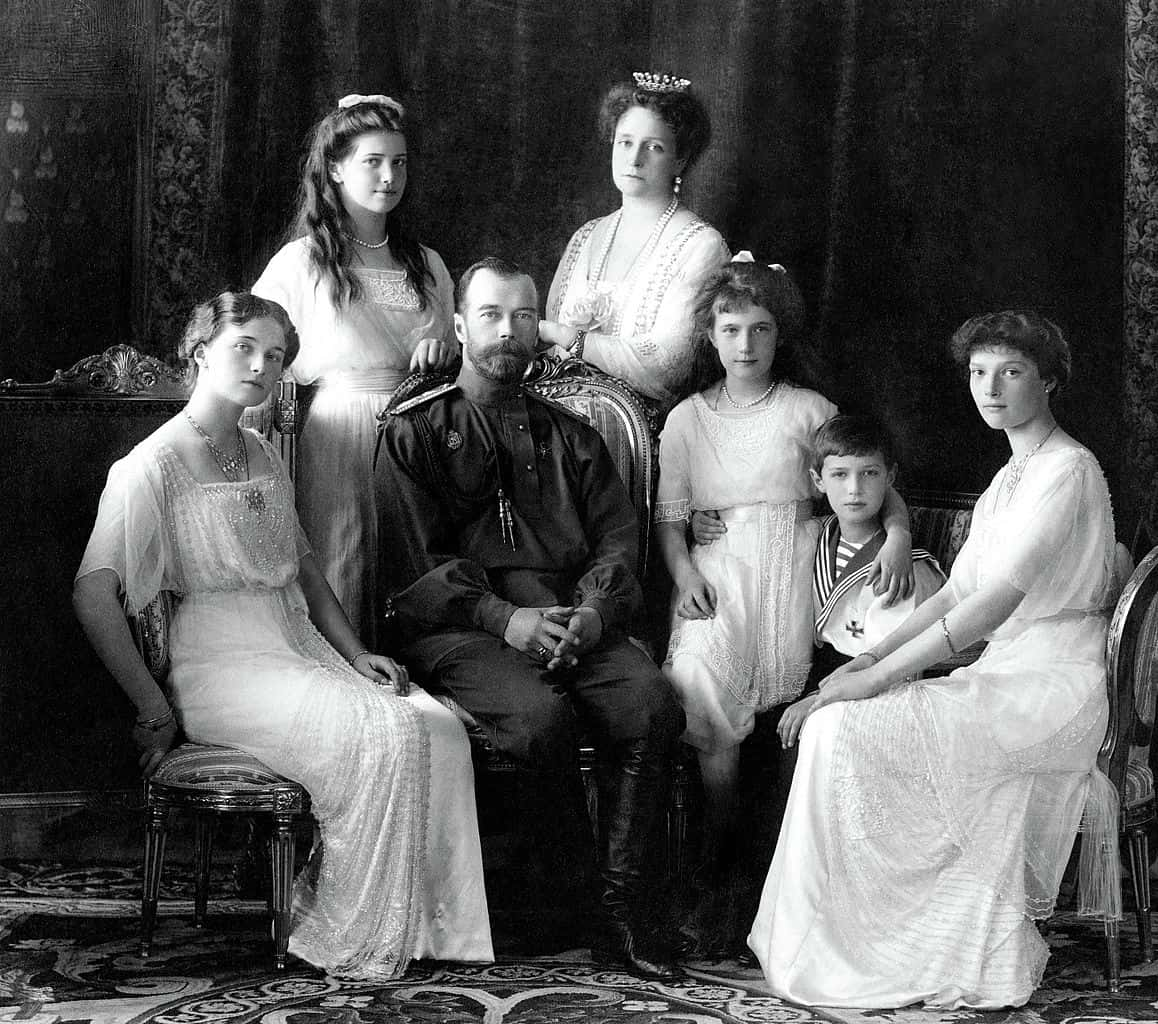
20. The Mysterious Mystic
100 years after his death, Grigori Rasputin remains an enigma. A self-proclaimed holy-man and healer with the ability to predict the future. He had a strong influence on the Russian royal family, and especially Czarina Alexandra. Fearful of his growing power, a group of nobles, led by the Czar’s nephew-in-law and his first cousin, first tried to poison him with cyanide-laced wine. When that didn’t work, they shot him at close range, and left him for dead. This still didn’t kill him, and he attempted to escape. His assassins caught him, shot him again, beat him, and threw him into the freezing river. His body was discovered two days later.

19. Mexican Robin Hood
Pancho Villa was a notorious bandit and revolutionary who fought against the regimes of Porfirio Diaz and Victoriano Huerta. He has been described as a bloodthirsty and ruthless killer, but also as a generous man who donated to children’s charities and orphanages. In 1913-14, he was also the subject of numerous ballads describing how he and his gang would steal from the rich and give to the poor. On July 20, 1923, assassins ambushed his car and shot it over 40 times with Villa and his bodyguards inside. As to who actually ordered the hit? Historians believe that Alvaro Obregon (president of Mexico) at least knew about the conspiracy to kill Villa and allowed it to go ahead.

18. The Outrageous Gladiator Emperor
Commodus was a corrupt ruler who believed himself to be a reincarnation of Hercules and enjoyed fighting in the Gladiator arena. He received a lot of negative attention for his outrageous behavior, and this moved prefect Laetus to start plotting his assassination. The first attempt to kill him failed when he vomited up the poison that was placed in his food. For a second attempt, the conspirators had his wrestling partner Narcissus strangle him in his bath. This time they were successful, and he died on Dec 31, 192.

17. Construction and Conquest
Yangdi was the second and penultimate emperor of the Sui Dynasty in China from 581-618. He ascended to the throne in 604, reportedly after killing his father the emperor and his older brother. He was an extravagant spender who imposed excessive taxes, and took every opportunity to fill the royal treasury. In 1618, military officers staged a coup and attacked the palace. Realizing that he was about to be killed, he offered to swallow poison. When no poison could be found, he removed his scarf and gave it to a soldier who then strangled him with it. Several of his relatives and high-level officials were also killed.

Sources: 1, 2, 3, 4, 5, 6, 7, 8, 9, 10, 11
16. Independence for All Ireland!
Michael Collins was an Irish Nationalist known for leading the Irish Volunteers (an early version of the IRA) against British forces when Ireland declared its independence. His signing of the treaty that gave Ireland Dominion status within the British Empire angered many members of the Republican party. Some believed that he had betrayed the movement. When Collins signed the treaty, he was reported to have said: “I tell you, I have signed my death warrant”. On August 22, 1922, Collins’s car was ambushed, and he was shot. Oddly, he was the only one killed, and nobody has ever been able to confirm exactly what happened that day or who fired the fatal shot.

15. The Founder of Fascism
In 1919, Benito Mussolini formed the Facist Party in Italy, and the “Black Shirts” squads of war veterans marched on Rome in 1922 to form the government. In 1925, he gave himself the title of Dictator, and he famously allied himself with Hitler during WWII. As the Allies closed in, and anti-fascist partisans rose, Mussolini’s power evaporated. After a failed attempt to flee with his mistress, partisans captured him and executed him by machine gun fire.

Benito Mussolini and Hitler
14. Et tu Brutus?
During a Civil War, Julius Ceasar rose quickly from military general to master of the Roman Republic. Many senators, including his friend Marcus Brutus, thought that he’d grown too powerful, and they conspired to kill him. As he entered the hall, he was surrounded by senators holding daggers. Servilius Casca struck the first blow, and then the rest of the senators joined in, stabbing him repeatedly in the head. Cassius and Brutus tried to rally a Republican army, and Brutus issued coins celebrating the assassination known as “The Ides of March.”

Statue of Julius Ceasar.
13. The Mayor of Castro Street
Harvey Milk owned a camera shop on Castro Street, and made a name for himself advocating for Gay rights and for the rights of small-business owners. Milk received several death threats throughout his career, prompting him to record a will to be read if he was assassinated. It said: “If a bullet should enter my brain, let that bullet destroy every closet door.” On November 27, 1978, Milk, and Mayor George Monscone were shot and killed by a former city supervisor who blamed them for his struggles.

12. The Death of Camelot
On Nov. 22, 1963, John F. Kennedy, the 35th President of the United States was assassinated while travelling through Texas in his open-top convertible. Since his death, numerous conspiracy theories have formed about the true circumstances behind it. In 1978, the House Select Committee on Assassinations found that Kennedy was “probably assassinated as a result of a conspiracy.” The committee’s findings still remain widely disputed.

Photo taken shortly before the assassination.
11. Another Kennedy Struck Down
The summer of 68 was a turbulent time in American history, and Robert Kennedy, the brother of J.F.K., was perceived as the person who could unify the people. As he was accompanied out a rear exit of the Ambassador hotel, 22-year-old Palestinian Sirhan Sirhan stepped forward with a rolled campaign poster hiding his revolver, and fired several shots at Kennedy. Sirhan confessed and later said that he believed Kennedy was “instrumental in the oppression of Palestinians."

10. Assassinated Assassin
Lee Harvey Oswald was the man the U.S. Government claimed shot J.F.K. Shortly after killing Kennedy, Oswald was assassinated in the basement of Dallas Police Headquarters by Jack Ruby--a nightclub owner with links to organized crime. Ruby claimed he shot Oswald because he was upset about Kennedy’s murder and wanted revenge.

Lee Harvey Oswald.
9. The Shot that Started WWI
Archduke Franz Ferdinand II of Austria, heir to the Austro-Hungarian empire. was gunned down in his car by 19-year-old Gavrilo Princip. The irony was that this wasn’t even the planned assassination. A Serbian secret society called the Black Hand recruited six assassins to kill the Archduke. The killers were placed along his motorcade route through Sarajevo. The first two assassins chickened out. The third threw his bomb, but it bounced off of the car’s convertible cover and blew up the car behind them.
After delivering a speech, Ferdinand was headed to the hospital to visit those wounded by the bomb. Princip was getting a sandwich when he noticed Ferdinand’s car reversing after his driver took a wrong turn. He ran up to the open car and fired two shots, killing Ferdinand and his wife. The killing was the catalyst for starting World War I.

Photo taken moments before the assassination.
Sources: 1, 2, 3, 4, 5, 6, 7, 8, 9, 10, 11
8. First Elected Female Head of a Muslim Nation
Benazir Bhutto, the former Prime Minister of Pakistan inherited control of the Pakistan People’s Party after her father’s overthrow and hanging, and spent three decades fighting for her place in politics. In 1988, she won the general election, and became both the first woman and the youngest person to head a Muslim state in the modern era. On December 27, 2007, as she was waving to a crowd at a PPP rally, a gunman open-fired on her vehicle. A bomb then exploded near the car, killing Bhutto and at least twenty other people. In the months following her murder, the C.I.A. and Pakistani Officials named Baitullah Mehsud, a Pakistani militant with links to al-Qaeda, as the mastermind behind her death.

7. America’s Most Famous Criminal
Jesse James was one of America’s most famous criminals. For 16 years, he and his brother Frank committed robberies throughout the Midwest, starting with banks and eventually moving into train robberies as well. Jesse and Frank successfully evaded capture by the Pinkerton Detective Agency, but on April 3, 1882, his luck ran out. James was meeting with the Ford Brothers in his home to discuss his plan for the next robbery while his mother made breakfast. When Jesse turned his back, Bob Ford shot him several times in the back. On his tombstone are the words “Jesse W. James...Murdered by a traitor and a coward whose name is not worthy to appear here.”

6. Not Such a Peaceful Rally
Before becoming the 5th Prime Minister of Israel, Yitzhak Rabin was leader of the Arab-Israeli war in 1948, and served of Chief of Staff of Israel’s six-day-war of 1967. As Prime Minister, he negotiated cease-fire agreements with Syria, and the military disengagement agreement between Israel and Egypt in 1977. On Nov 4, 1995, he was shot in the back and the leg by a 27-year-old Jewish law student while walking to his car after a peace rally. The assassin had connections to the far-right Jewish group Eyal, and confessed that he killed Rabin because he wanted to “give our country to the Arabs.”

Yitzhak Rabin and wife.
5. Shot in Vegas
On September 7, 1996, hip-hop artist/rapper Tupac Shakur was gunned down in a drive-by shooting in Vegas. Many conspiracy theories surrounded his death. Some people believed that his death was arranged by rival rapper Biggie Smalls over an East Coast/West Coast feud. Others thought he was killed by his label boss to prevent him from starting his own label. Twenty years after his shooting, the LAPD have confirmed that the shooting was entirely gang-related, and was retaliation from the Crips for the earlier beating of one of their members.

4. The Great Soul
Early in his life while living in South Africa, Ghandi decided to fight injustice and defend his rights as an Indian and a man. He formed the Natal Indian Congress in 1906, and drew attention to the plight of Indians in South Africa. In 1914, he returned to India and by 1920, became the leader of the Indian movement for independence. Mohandas “Mahatma” Gandhi was assassinated in New Delhi on Jan 30, 1948 by a Hindu fanatic who objected to his tolerance for Muslims. His methods of civil disobedience influenced civil rights leaders around the world.

3. A Dream Extinguished
On April 4, 1968, Martin Luther King Jr. was fatally shot while standing on his balcony outside his second-story hotel room in Memphis, Tennessee. His assassination came just one day after delivering his final sermon in which he said, “I want you to know tonight that we, as a people, will get to the promised land.” He was laid to rest in his home town of Atlanta, Georgia, and tens of thousands of people lined the street to pay tribute to his casket as it passed.

2. The Intellectual Beatle
John Lennon and the Beatles took Britain and the world by storm in the 1960s, and they became one of the most popular musical groups of the 20th century. Lennon was the most outspoken of the four, and caused major controversy in 1965 when he declared the Beatles “more popular than Jesus”. He later became an anti-war activist, and toyed with communism in the lyrics of his solo hits like “Imagine.”
On December 8, 1980, he was shot by a 25-year-old evangelical Christian named Mark David Chapman outside his apartment in New York. Immediately after Chapman shot four bullets directly into John Lennon's back, he sat down and started to read The Catcher in the Rye, waiting for authorities to arrive. The Catcher in the Rye had a profound impact on Chapman, and he believed that killing John Lennon would make him become the book’s protagonist, Holden Caulfield.

1. The Face of the Nation of Islam
Malcom X was the face of the Nation of Islam throughout the 50s and into the 60s, but left the organization in 1964, and became a believer in Sunni Islam. In 1965, while speaking at a meeting of the Organization of Afro-American Unity, he was shot in the chest by a man. Two other men charged forward, and shot him 16 times with handguns. The three men were all part of Nation of Islam












